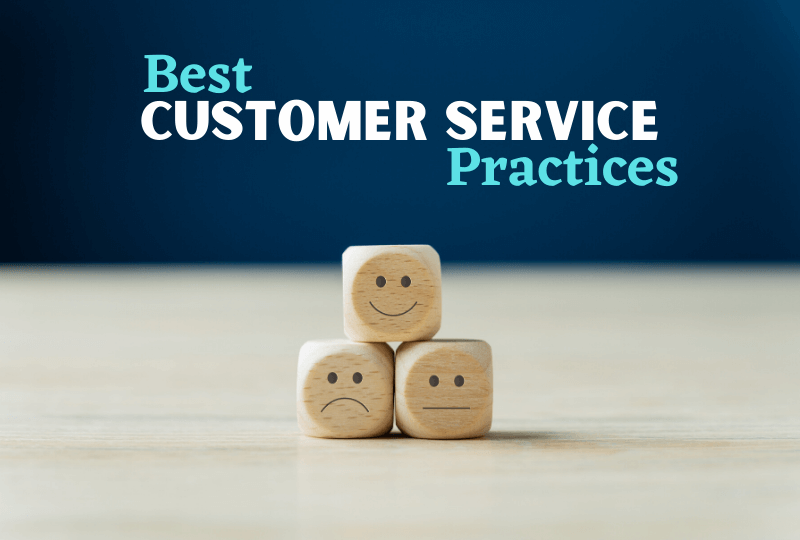In an increasingly digital world, customers expect immediate assistance and personalized experiences when interacting with brands. As a result, businesses are constantly seeking innovative ways to enhance their customer service. One of the most effective tools in achieving this is live chat. This blog will explore the role of live chat in improving customer service, its benefits, best practices, and how to implement it effectively.

Table of Contents
ToggleWhat is Live Chat?
Live chat is a communication tool that allows businesses to interact with customers in real time through a chat interface on their website or mobile app. It enables users to send messages to customer support representatives instantly, facilitating quick resolution of inquiries or issues. Unlike traditional communication channels such as email or phone calls, live chat offers immediate responses, making it a preferred choice for many customers.
Benefits of Live Chat for Customer Service
1. Instant Support and Response Time
One of the primary advantages of live chat is the ability to provide instant support. Customers no longer have to wait on hold for extended periods or wait for email responses that may take hours or even days. With live chat, customers can receive immediate answers to their questions, which significantly enhances their overall experience.
2. Increased Customer Satisfaction
Providing fast and efficient support leads to higher customer satisfaction. When customers feel that their concerns are addressed promptly and effectively, they are more likely to have a positive perception of the brand. Live chat fosters this satisfaction by reducing response times and offering personalized assistance, making customers feel valued and appreciated.
3. Cost-Effective Solution
Live chat can be a cost-effective customer service solution for businesses. Compared to traditional phone support, which requires multiple agents to handle calls, a single live chat representative can manage multiple conversations simultaneously. This efficiency can reduce operational costs while maintaining high service standards.
4. Enhanced Customer Engagement
Live chat encourages customer engagement by providing an interactive platform for communication. Representatives can initiate conversations with website visitors, offer assistance, or guide them through the purchasing process. This proactive approach helps foster relationships with customers and can lead to increased sales and customer loyalty.
5. Improved Accessibility
With live chat, customers can seek assistance at any time, regardless of their location. Many live chat solutions offer mobile apps, allowing customers to reach out for support while on the go. This accessibility caters to customers’ needs and ensures that they can receive help when they need it most.
6. Rich Analytics and Insights
Live chat tools often come equipped with analytics features that provide valuable insights into customer behavior and preferences. Businesses can track metrics such as response times, customer satisfaction scores, and chat volume. This data can help identify areas for improvement, allowing companies to refine their customer service strategies.
7. Seamless Integration with Other Channels
Live chat can easily integrate with other customer service channels, such as email, social media, and CRM systems. This integration ensures a consistent customer experience, enabling support agents to access customer information and interaction history across different platforms. It allows for a more personalized approach to customer service.
Best Practices for Implementing Live Chat
To maximize the benefits of live chat in customer service, consider the following best practices:
1. Ensure 24/7 Availability
While not all businesses can offer round-the-clock support, strive to provide live chat during peak hours when customers are most likely to seek assistance. If possible, consider using chatbots to handle basic inquiries outside regular hours, ensuring customers receive immediate support even when live agents are unavailable.
2. Train Your Support Team
Invest in training for your customer support representatives. They should be knowledgeable about your products, services, and company policies to assist customers effectively. Additionally, training should focus on communication skills to ensure that interactions are friendly, professional, and empathetic.
3. Utilize Chatbots for Initial Engagement
Implementing chatbots for initial customer interactions can help streamline the support process. Chatbots can handle frequently asked questions, gather information, and route inquiries to the appropriate live agent when necessary. This hybrid approach combines efficiency with human touch.
4. Personalize the Customer Experience
Use customer data to personalize interactions during live chat. Address customers by their names, reference their previous interactions, and tailor responses based on their specific needs. Personalization can significantly enhance customer satisfaction and loyalty.
5. Monitor Performance and Gather Feedback
Regularly monitor live chat performance metrics to assess effectiveness. Gather feedback from customers about their live chat experiences to identify areas for improvement. Use this information to refine your approach and ensure that your live chat service continues to meet customer expectations.
Conclusion
Live chat is a powerful tool for improving customer service, offering instant support, enhancing customer satisfaction, and increasing engagement. By implementing best practices and leveraging analytics, businesses can create a seamless and efficient customer experience that drives loyalty and growth. As customer expectations continue to evolve, incorporating live chat into your customer service strategy will be essential for staying competitive in the digital landscape. Embrace the power of live chat and transform the way you connect with your customers!


No responses yet